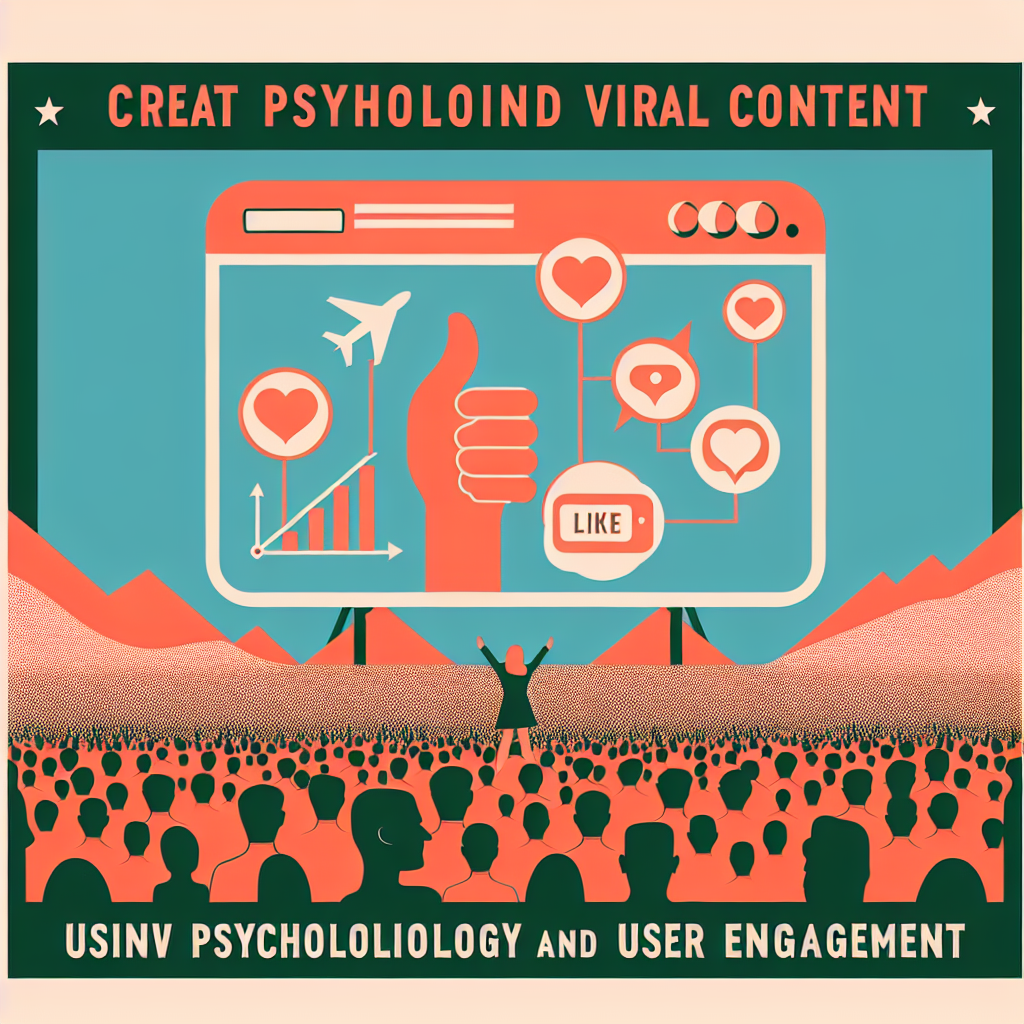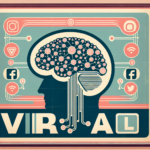“`html
The Psychology of Viral Content and Social Media
Ever wondered why certain content goes viral while others do not? Or why the quest for likes, comments, and shares has become a vital part of our digital lives?
In this article, we are going to explore the psychological aspects behind the virality of content, the influence of social media on self-esteem and mental health, and how oversharing and validation play significant roles in our online interactions.
We will examine the emotional triggers behind viral content, understand the concept of social currency, and how practical value and effective storytelling play significant roles in content engagement.
We’ll also discuss how sharing and engagement on social platforms taps into our innate desires for validation, comparison and the “Fear Of Missing Out” (FOMO), and the potential implications to our mental health.
By understanding the mechanisms behind these phenomena, we can better move through the social media landscape and ensure a healthier digital experience. So, are you ready to uncover these captivating aspects of digital social behavior? Let’s get started!
The Psychology Behind Viral Content
Understanding Emotional Triggers
Emotions play a critical role in viral content. Content that evokes strong emotions tends to be shared more frequently. Here are some key emotional triggers to consider:
- Happiness: Content that makes people feel happy, such as funny videos or heartwarming stories, is often shared to spread joy.
- Surprise: Unexpected or shocking content captures attention and prompts viewers to share the surprise with others.
- Awe: Inspiring content that amazes or surprises can drive engagement and sharing.
- Sadness and Anger: While generally less positive, content that moves people to take action often goes viral.
Social Currency and Its Influence
People share content to express their identity and influence how others perceive them. This concept, known as social currency, affects the virality of content. Here’s why it’s significant:
- Self-Expression: Sharing content allows individuals to reflect their values and beliefs.
- Influence: Sharing information can elevate a person’s status by being seen as knowledgeable or trendy.
- Community Building: Joining groups that share similar interests through viral content fosters a sense of belonging.
The Role of Practical Value
Content that provides useful or valuable information often goes viral because it offers practical benefits to the audience.
- Educational Content: Guides, how-tos, and tips help people solve problems or learn new skills.
- Resource Sharing: People are likely to share content that has actionable and tangible benefits for others.
Storytelling as an Engagement Tool
Effective storytelling can make content more relatable and memorable, which is key to virality. Here’s why stories work:
- Relatability: Stories that touch on common human experiences are more likely to engage the audience.
- Narrative Structure: A well-structured story with a clear beginning, middle, and end keeps the audience engaged.
- Emotional Connection: Stories humanize content and create an emotional bond with the audience.
Understanding Virality Through Quantifiable Data
| Element | Impact on Virality |
|---|---|
| Positive Emotions | Increases likelihood of sharing by 13% |
| Negative Emotions | Increases likelihood of sharing by 11% |
| Practical Value | Increases likelihood of sharing by 34% |
These elements demonstrate quantitatively how different aspects of content can influence its potential to go viral.
Confirmation from Experts
Understanding the psychology of viral content is a blend of emotion, value, and narrative. For a deeper understanding of why people share content, you can visit Psychology Today for expert insights. This source provides extensive information related to human behavior and social sharing trends.
The Influence of Social Media on Self-Esteem
Comparisons and Perceived Self-Worth
One notable psychological factor in the use of social media is the comparison aspect. When individuals scroll through social media feeds, they can’t help but compare their lives with those of their peers.
- Upward Comparison: Seeing others’ successes can lead to feelings of inadequacy and decreased self-esteem.
- Downward Comparison: On the other hand, seeing others’ failures or negative experiences can lead to an increased sense of self-worth.
The Quest for Validation
Social media platforms provide an avenue for people to seek approval and validation from their peers.
- Likes, Shares, and Comments: These reactions to posts serve as sources of instant gratification and can enhance a person’s self-esteem.
- Public Persona: Many users carefully curate their online image to portray a life that is more glamorous than their reality.
The Fear of Missing Out (FOMO)
This refers to the apprehension that others might be experiencing more fulfilling lives, leading to a desire to stay constantly connected through social media.
Social Media’s Impact on Mental Health
Depression and Anxiety
Excessive use of social media has been linked to increased levels of anxiety and depression. A study by the Pew Research Center indicated that people who spent more than two hours per day on social platforms had a significantly greater likelihood of reporting mental health issues.
Loneliness
Despite being connected online, excessive social media users often report feelings of loneliness. This can be attributed to the superficial nature of many online relationships.
Effect of Cyberbullying
Social media can also be a platform for bullying and harassment, leading to stress and other mental health issues.
The Role of Social Media in Fostering Connections
Worldwide Connectivity
Not all aspects of social media use are negative. For instance, it allows individuals to maintain contact with friends and family around the globe.
Information Exchange
Many users turn to social media for the latest news, updates, and trends, making it a valuable tool for information gathering and sharing.
Community and Support
Niche interest groups and online communities offer a sense of belonging to individuals and provide a platform to share experiences and support.
The Power of Social Media in Social Causes
Social media platforms have been pivotal in raising awareness and mobilizing support for various social issues. The #MeToo movement, for instance, went viral on social media platforms, highlighting their role in social change.
For more details on the impact of social media on mental health and society as a whole, you can visit U.S. Department of Health & Human Services, offering a host of resources on this topic.
The Psychology Behind Oversharing on Social Media
Need for Validation and Attention
Oversharing on social media can be driven by a deep-seated need for validation and attention. When individuals post personal information, they often seek:
- Social Approval: Positive reinforcement through likes and comments can affirm one’s self-worth.
- Sense of Belonging: Sharing personal stories can make individuals feel more connected to their social circles.
Lack of Privacy Awareness
Some users may not fully comprehend the implications of their digital footprint:
- Permanent Records: Everything shared online can potentially be archived indefinitely, though users sometimes underestimate this permanence.
- Future Consequences: Oversharing can lead to unintended consequences in professional and personal areas of life.
Emotional Outlet
Social media provides a platform for emotional expression:
- Pathway for Venting: Sharing personal issues online can act as a form of therapy for some users.
- Seeking Empathy: People who are feeling isolated may overshare in search of empathy and support from their network.
Impact of Narcissistic Traits
Narcissistic tendencies can also fuel oversharing behaviors:
- Desire for Admiration: Users with high levels of narcissism may share excessively to attract admiration and attention.
- Self-Centric Content: Regularly posting selfies or personal achievements can stem from a need to be the center of attention.
Understanding these psychological drivers can shed light on why individuals engage in oversharing. For further exploration of behavioral insights into social media use, consider exploring resources available on Psychology Today.
The Psychology of Social Media Validation
Instant Gratification and Emotional Reward
Social media platforms are designed to provide instant feedback through likes, comments, and shares. This instant gratification can trigger the brain’s reward system by releasing dopamine, leading users to crave more interaction and approval.
- Dopamine Rush: The pleasurable feeling users experience when receiving likes or shares can become addictive.
- Emotional High: Positive feedback provides an emotional boost, reinforcing posting behavior.
Social Comparison and Peer Pressure
Social media platforms encourage users to observe others’ lives, which can lead to social comparison. This can be both motivating and detrimental, depending on individual perceptions.
- Influence of Likes: The number of likes can set a ‘social standard,’ pressuring individuals to conform to perceived trends.
- Peer Influence: Seeing popular posts from peers may prompt users to emulate similar behaviors to gain validation.
The Role of Social Approval
Engagement on social media acts as a metric for social approval and popularity, which are significant drivers for content creation and sharing.
- Status Seeking: High engagement numbers can elevate perceived social status.
- Self-Worth: Positive social interactions can contribute to a person’s self-esteem.
Narrative Identity and Online Persona
The carefully curated images and posts on social media form an “online persona,” which individuals use to tell their life story.
- Image Crafting: Users often present idealized versions of themselves to shape how others perceive them.
- Life Narratives: Consistent posting allows users to craft narratives that align with their desired identity.
Feedback Loop and Behavioral Reinforcement
The cycle of posting and receiving feedback creates a feedback loop that reinforces social media usage patterns.
- Behavioral Conditioning: Regular exposure to positive feedback conditions users to replicate these behaviors.
- Engagement Habits: The consistent need for approval can lead to habitual checking of social media accounts.
For further exploration into the psychological drivers of social media validation, consider exploring insights on BBC, which offers in-depth articles on social behavior and media trends.
Wrapping Up: The Connection Between Psychology and Social Media
In conclusion, the psychology behind the ecosystem of social media is a fascinating intertwining of emotional triggers, social currency, practical value, and storytelling, all of which galvanizes content to go viral. Moreover, social media’s impact on self-esteem incites a comparison game that often leads to a quest for validation.
The power of narrative identity, feedback loops, and instant gratification in social media platforms trigger addictive behaviors, making users feel that their worth hinges on a like, comment, or share. Thus, social media platforms have become a double-edged sword: a source of communication and knowledge, and a catalyst for potential detrimental psychological effects.
Frequently Asked Questions – FAQs
What are some emotional triggers that influence virality?
Happiness, surprise, awe, and the evocation of sadness and anger are key emotional triggers that can influence content to go viral.
Is social currency significant for virality?
Absolutely. Social currency, or the idea that sharing content can shape individuals’ identities and perceptions, affects how often and why content is shared.
Does oversharing have any psychological implications?
Yes, oversharing on social media can be linked to a need for validation and attention, lack of privacy awareness, emotional venting, and even narcissistic traits.
What are some ways social media impacts self-esteem and mental health?
Social media can have both positive and negative impacts on self-esteem and mental health. While it offers a platform for validation and a sense of community, it can also lead to feelings of inadequacy, loneliness, anxiety, and even depression.
Why do users undergo a dopamine rush on social media?
Instant feedback in the form of likes, shares, and comments can trigger a dopamine release in the brain, creating a pleasurable sensation and potential addiction to social media use.
“`






